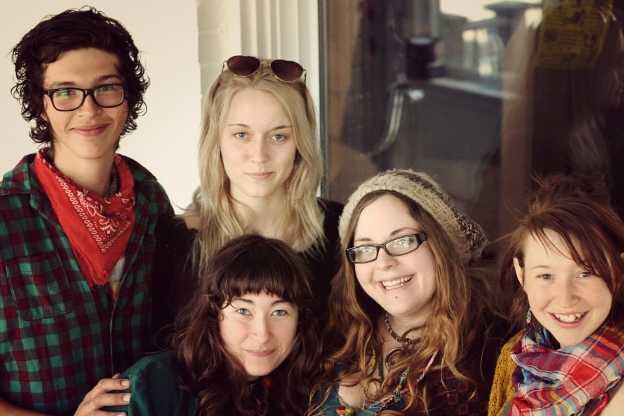
It’s time to talk about what I’ve learned about community building over the years. I recognize community to be one of the pillars for me to lead a happy, fulfilling, successful life.
I traveled across North America for four years and when I decided I was done I came back to my home town—not the town I was born in, the town I felt most at home in. I came back because after all the places I’d seen, people I met and communities I’d been invited into — I realized, in the most proverbial of ways, what was sitting at my doorstep all that time.
Admittedly, I might be biased.
But I was already part of a wide reaching group of supportive, sensible, conscious individuals dedicated to adventure and growth. We had multiple community houses for our tribe to chill at with half a dozen weekly events hosted specifically for us. But we were also far reaching enough that we were always meeting new people.
We’d be that group dancing like no ones watching, we’d cook for one another, go on group outings together, we’d get together to jam, paint, draw and sing—like the scenes you see in movies.
It gives me a sort of hazy, mushy feeling to reminisce.
What’s your community like? Is it close knit with potlucks, house concerts and art jams? Is it more ethereal loosely held together with memories of the good ‘ol days? Maybe your community is online and you Skype with people you’ve developed relationships with!
Or maybe you haven’t found yours yet.
If it’s the latter, no worries! I’m going to tell you exactly what you need to build one.
We’re geared for tribes — ideally around 150 — any bigger and we automatically divide ourselves, any smaller and concerns about gene pools are raised.
And for communities to flourish third spaces are necessary. We need spaces to rest, to work and to gather. That’s the balance. A community that works, lives and plays together might be awesome for awhile but unless you have people who are unshakable in their self-care and dedicated to healing their past hurts, it can get messy.
It’s the third spaces where magic happens and ideally those spaces are available 24–7 which makes planning for connection obsolete.
Throughout the years I’ve lived without community, in communities that functioned seamlessly together, with old friends and new. I lived in communities of thousands that popped up for a week then disbanded. I’ve lived in communities in different countries, in groups that tried to create a community, I’ve spearheaded them and shut them down. I’ve dabbled in communities online and recognize how they play a large part in my overall well-being.
But putting well-intentioned people together is not an automatic recipe for success when building these third spaces. Unless your long term plan is to trek off into the woods with your dog and an ax ready to forge a life all unto your own , this is gonna be useful.
The 6 Pillars of Badass Communities
1. Define what community means to you.
What do you want in a community and what’s ideal for you? What are your values and the group’s values? What’s the common thread that aligns you with everyone else and holds you all together when the going gets rough?
Granted, these might be ethereal questions that can be challenging to articulate but it’s key, so give it a try. Clarity is your unfair advantage and the clearer you are on values, boundaries and purpose the better chance you have at creating a sweet tribe that can last a lifetime.
2. Create space to gather.
In my experience, gathering spaces should be organic spaces where people come together as a fairly organic part of their days. Events can be planned too, setting dates and times and while that works, having some sort of open door policy allows for so much magic.
Mish-mash it together however possible.
It doesn’t matter what it is or what it looks like; the point is you need a dedicated third space to gather that is easy, convenient and fun for your tribe to chill.
3. Decide how decisions will be made.
Someone needs to steer the ship, even if it’s not officially. I’ve never been part of a community that was truly “leaderless.” I know we like the concept but a leader that changes night to night or the person everyone informally speaks with is still a leader. Without one the ship drifts aimlessly.
Collectively we need somewhere to put all the information about the project so that decisions can be made effectively.
I’m not talking about projects running off of a dominance hierarchy, I’m talking about effective and inclusive decision making. There are different ways for decisions to be made and deciding how the group will make decisions will save headache down the line so pencil this in for meeting one.
4. Set structure.
What are the guidelines of the space or group? What’s accepted or not tolerated?
I spearheaded and lived in a community house for a year and a half. After our housewarming six of us who lived at the house went out to supper. We talked about what happened at the party that we loved and what we could have done without.
We talked about how to support one another if someone was uncomfortable with a situation and decided solidarity was how we’d come together. We identified those who were comfortable handling potentially confrontational situations and set boundaries to how the space would operate. We decided beforehand what would happen if those boundaries weren’t respected and made sure to communicate the house boundaries to all who decided to take part.
If someone was uncomfortable with something going on at the house, we’d talk about ways to have everyone’s needs met and ensure we weren’t making decisions based on assumptions. And my favorite part — we’d have conversations that were vulnerable and uncomfortable and helped to foster an environment of safety and radical personal responsibility. Boo-ya!
5. Decide on a peaceful conflict resolution model.
There’s one model I love, it was introduced to me by my mentor and comes originally from Paul and Layne Cutwrite. It’s definitely gotten me out of some sticky situations and it goes a little something like this:
When we experience an upset, it’s important to remember we’re not upset at the thing we think we are.
We’re not upset at the present moment situation. What’s happening in the moment reminds us too closely of an unhealed pain from the past. Feeling conflicted in a situation is a gift that presents the opportunity to look inside and heal ourselves. This is a huge and powerful wake up call when gently presented to someone in pain. Hurt people hurt people and recognizing the situation closely reminds you (or another) of an unhealed hurt is the first step in reducing the violence in our worlds.
Thinking someone meant something other than what they intended can be a source of pain for most people.
We get a story in our minds and run with it without questioning whether that story is true. Maintaining flexibility in the stories you tell yourself about a person or situation is bound to reduce the frequency of upsets we experience and to make sure both parties are understood it helps to ask each other what you heard the other person say.
“I’m interpreting what I hear you say as…. is this what you mean?”
“I think I hear you say…”
“Making sure we’re on the same page is important to me, would you be willing to tell me what you heard?”
Are all ways to reduce upsets and increase the level of connection.
When human beings get scared we have a tendency to slip into control.
This is absolutely going to undermine the trust and security in any interaction but we do it anyways. Make an agreement to look at situations where behavior exhibits control and look deeper to see what it was you were afraid of.
Many of us have forgotten that all humans are innocent, that each are doing the best they possibly choose with the tools and information they currently have and that includes ourselves.
We are often innocent of what others accuse us of and in turn, others are often innocent of what we accuse them.
The truth is that we were born innocent and that innocence is within us still.
At the same time we accept responsibility to take a look at our inner choices, the feelings and opportunities that present themselves as we interact with one another. We have the choice to create all our relationships consciously out of honesty and integrity and take the necessary steps to do so.
6. Talk.
Talk about what motivates people! Where are they going in their lives? Where do they see their part? What do they need to feel safe and to trust? What do they need to feel loved, supported and accepted? Where are they struggling in their lives and what do they need?
The first community I was ever a part of was a whopping 4. My younger sister and two friends all jam packed in a van for four months. We had a series of questions we asked and talked about as we left our hometown headed down to Nevada. Then again when we dropped off our two friends in exchange for two more and every time we dropped on off and picked up someone new.
We can ask each other questions like these:
Why are you here and why do you want to be here?
What do you need to feel loved, supported and safe?
What do you need to feel trust?
What’s your love language?
What’s going on in your life right now? Is there anything that could be done to make your time easier?
What boundaries do you know you have right now?
Are you willing to look at yourself and take radical personal responsibility for what’s going on for you before pointing the finger in blame or criticism of someone else?
Talk openly about the things you’re scared of, the things you love and the things you notice. Vulnerability is the biggest indicator of courage and unless you take that first, scary step you’ll never know how loved and accepted you are for exactly where and how you are.
You’ve got this, sweetheart.
Relephant:
Finding Your People: The Importance of Community.
How (Not) to Live in an Intentional Community.
Author: April Henheffer
Editor: Renée Picard
Photo: Author’s Own










Read 0 comments and reply